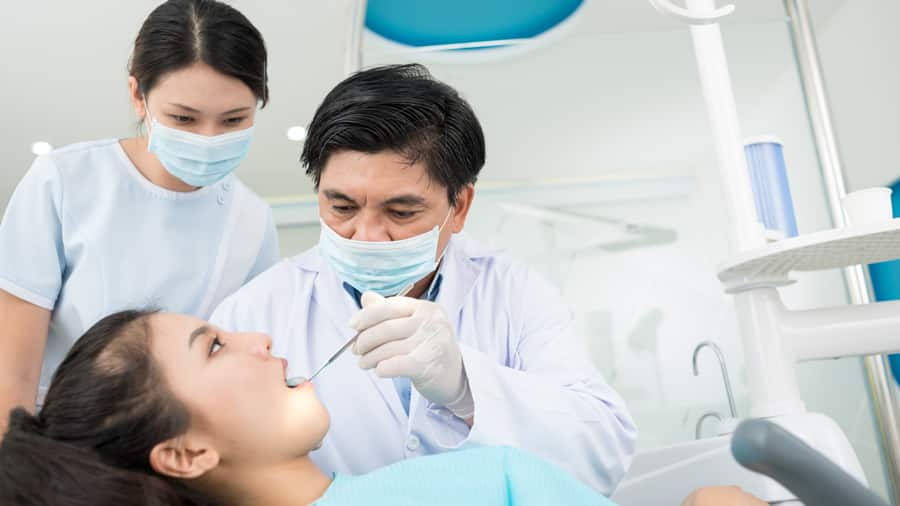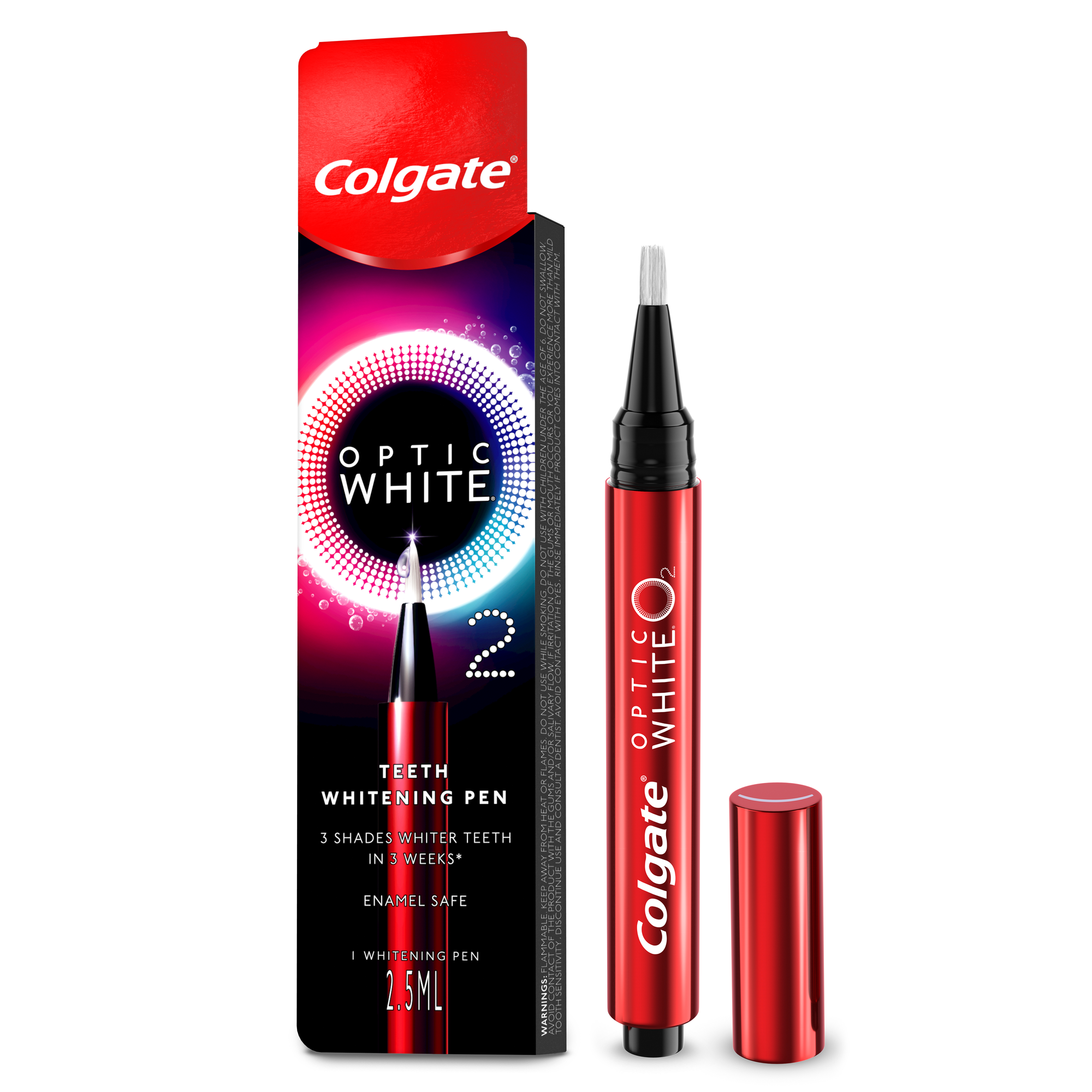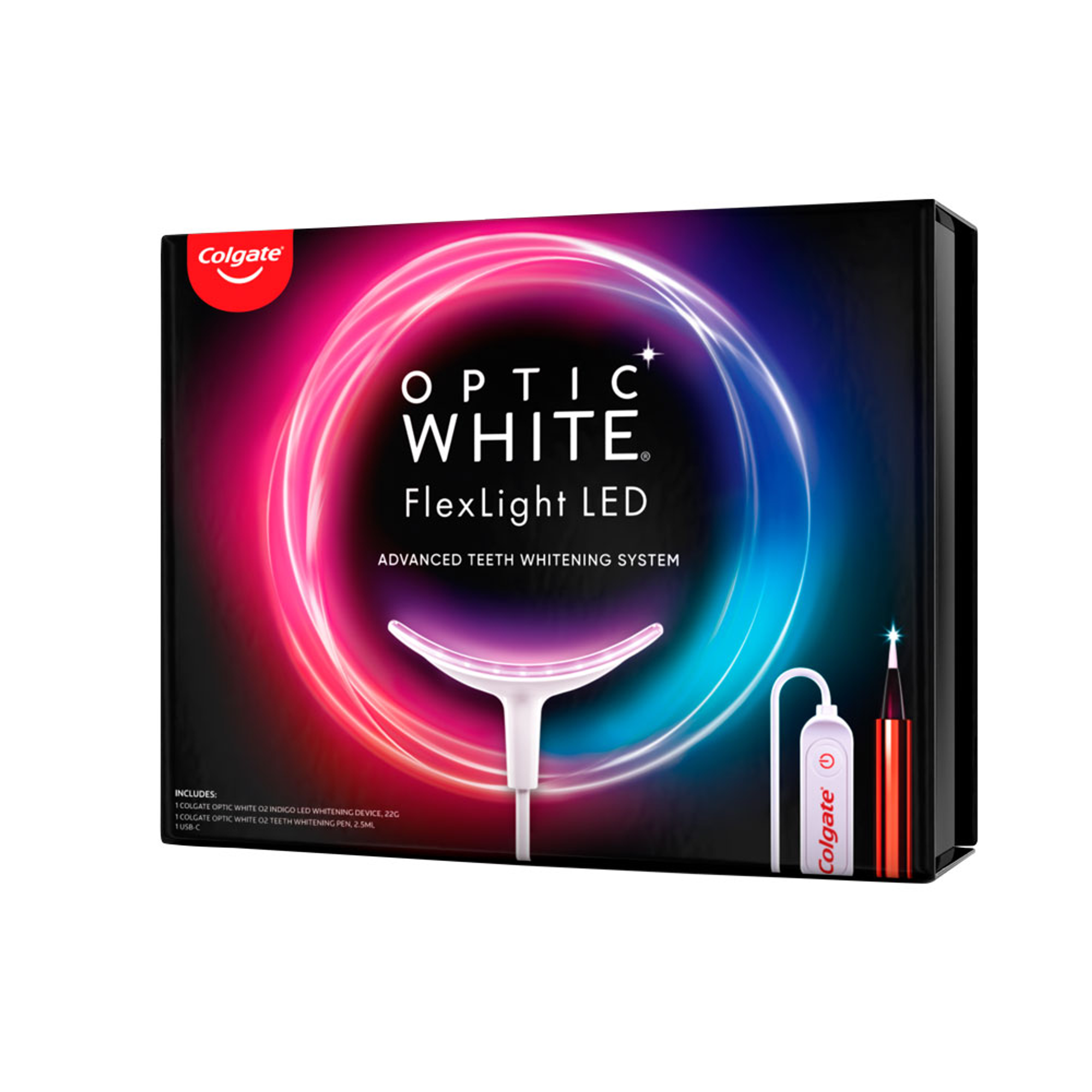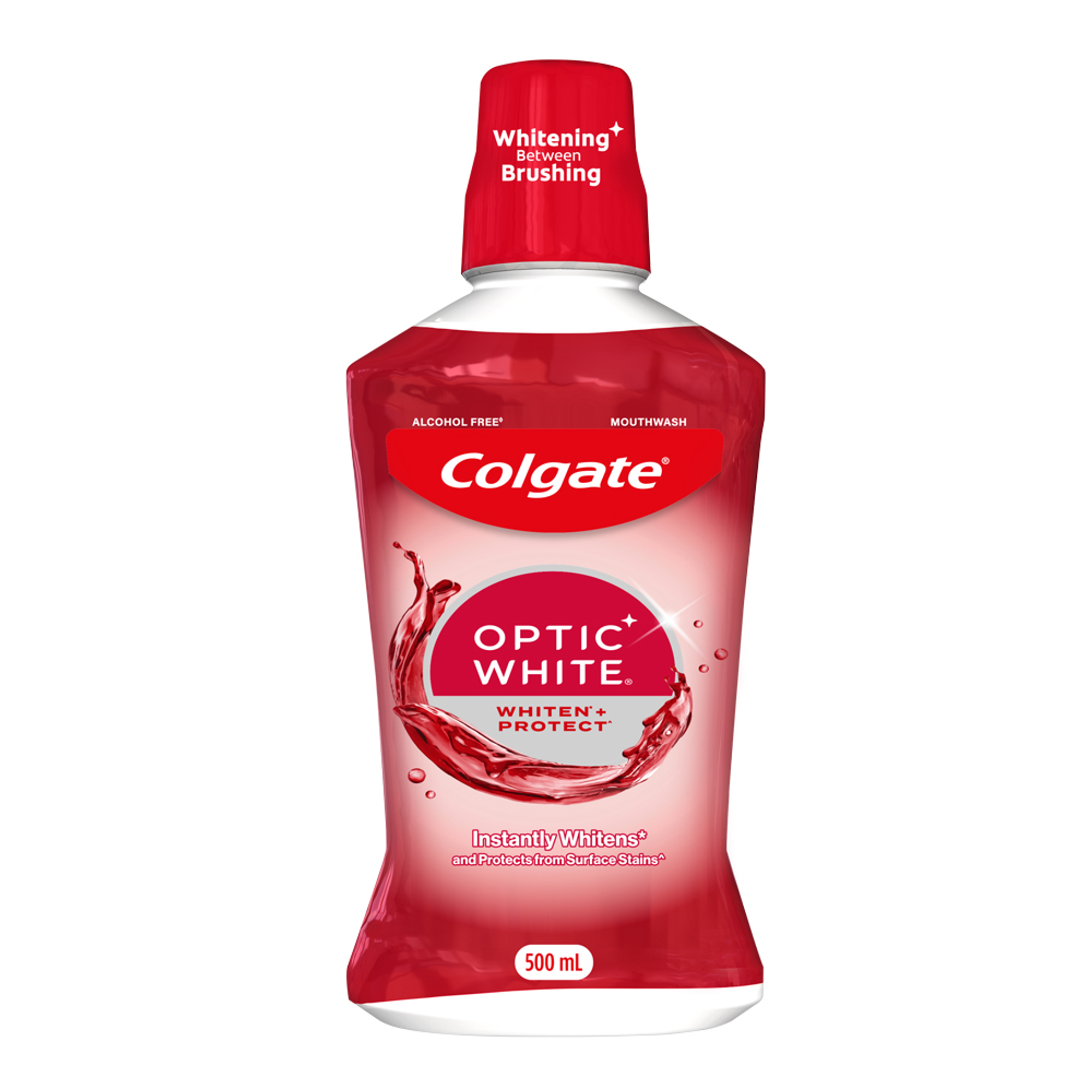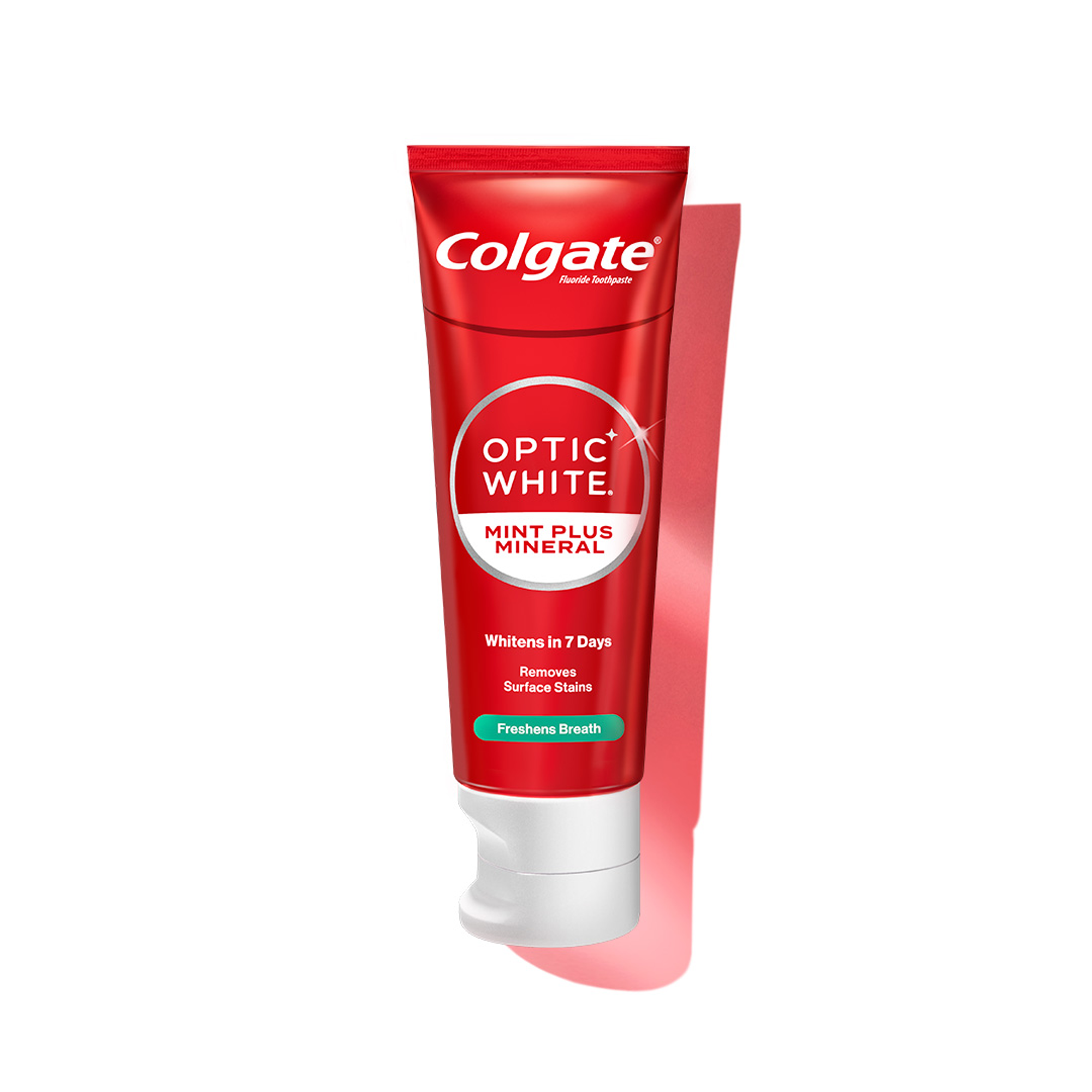What is Teeth Whitening?
Teeth whitening is a process that helps lighten the colour of your teeth by removing stains and discolouration. It can be done professionally by a dentist or through various at-home methods. Usually, whitening works by using chemical agents like hydrogen peroxide or carbamide peroxide, which break down stains and brighten the teeth. Why do people want their teeth to be white? Below are some of the main goals of teeth whitening:
Removing surface stains
Lightening the natural shade of teeth
Improving overall appearance for a more confident smile
Why do Teeth Stain or Discolour?
There are many reasons why your teeth may get stained or discoloured. From daily lifestyle habits to the food and drinks that you consume, the colour of your teeth may depend on multiple factors. Both extrinsic and intrinsic stains can develop on your teeth. Here is a breakdown of it in more detail.
Extrinsic (External) Stains
Extrinsic stains are those that form on the outer surface of the teeth. It forms as a result of certain lifestyle habits or inadequate oral care. You can often see them while smiling, as they are visible and may affect the appearance of your teeth if not properly taken care of.
These stains appear on the surface due to:
Dietary Habits: Certain food and drinks, such as coffee, tea, and red wine can cause external staining on the teeth. These substances contain pigments that can stick to the tooth enamel, making it stained.
Smoking and Tobacco Use: Consistent smoking and tobacco use can result in extrinsic staining. The nicotine and tar present in cigarettes can lead to the development of yellow or brown stains on the teeth.
Environmental Factors: Pollution, especially getting exposed to higher levels of air pollution, and the intake of certain medications can result in external tooth stains.
Poor Dental Hygiene Practices: Lack of regular brushing and flossing may allow plaque and food particles to settle on your teeth. Over time, plaque can harden into tartar, which contributes to the discolouration of the teeth.
Intrinsic (Internal) Stains
Intrinsic stains occur within the inner structure of the tooth, known as the dentin. This makes them harder to remove than extrinsic stains. They are often developed due to internal changes or conditions that affect the tooth from within.
Common factors that contribute to the development of extrinsic stains include:
Medications: Certain medications, especially tetracycline antibiotics, can cause deep stains in teeth. These stains develop as a side effect of these medications, particularly when taken during early childhood or pregnancy.
Trauma or Injury to Teeth: A strong impact or injury to a tooth can lead to internal discolouration. When a tooth experiences trauma, the dentin may darken due to internal bleeding or the death of the nerve inside the tooth.
Genetic Factors: Some people naturally have darker or more yellow-toned teeth due to their genetics. Factors such as the thickness of the enamel and the natural shade of dentin underneath can influence tooth colour.
Age-Related Stains
As we age, it is natural for our teeth to undergo changes that can lead to tooth discolouration. Age-related stains are often a combination of both extrinsic and intrinsic factors. These stains become more noticeable over time.
Here are some of the reasons why age is a factor that contributes to tooth staining:
Enamel Thinning with Age: Over the years, the protective enamel layer on the teeth gradually wears down due to daily chewing, brushing, and exposure to acidic food and drinks. As the enamel thins, the underlying dentin, a naturally yellowish layer, becomes more visible, making the teeth appear darker or more yellow.
Natural Changes in Tooth Colour Over Time: In addition to enamel thinning, the dentin itself tends to darken with age. This natural process, combined with years of exposure to stain-causing food, beverages, and lifestyle habits, contributes to an overall duller or more discoloured appearance.
Teeth Whitening Treatment Options & How Does it Work?
Teeth whitening treatment helps remove stains and lighten the discolouration of your teeth. Professional treatment from a teeth whitening dentist uses chemical agents, primarily hydrogen peroxide and carbamide peroxide. These agents penetrate the tooth enamel and break down stain molecules, effectively reducing discolouration. However, if you are wondering how effective is teeth whitening, it typically varies depending on whether it is performed in a dental clinic or at home.
Below are a few of the teeth whitening treatment options available for you:
In-Office Whitening (Chairside Whitening)
Professional teeth whitening treatments, also known as in-office or chairside teeth whitening, are the fastest and most effective way to reduce discolouration. There are different types of teeth whitening treatments that a dental professional may try out depending on the severity of your tooth stains. The most common types of in-office teeth whitening treatments include:
Chemically-Activated Whitening: Uses high-concentration peroxide formulas without light activation.
Light-Activated Whitening: Involves LED or UV light to enhance the whitening gel.
Laser Whitening: Uses laser energy to speed up the bleaching process.
With this being said, many people might wonder, “Do teeth whitening lights work?” The answer is that light-activated whitening can enhance the bleaching process, but the primary whitening effect still comes from the chemical agents.
How The Procedure Works
In Singapore, professional teeth whitening is a popular choice for those seeking safe and effective treatments. Here is how the teeth whitening works:
The dentist applies a protective barrier to shield your gums.
A professional-strength whitening gel is applied to your teeth.
A special light or laser may be used to activate the gel.
The treatment lasts around an hour, with immediate results.
Some dentists also offer custom whitening trays for at-home use. Now the question comes, “Do teeth whitening trays from the dentist work?” Mostly, these trays are considered to be effective, but results may take longer compared to in-office treatments.
Pros & Cons of In-Office Whitening
When looking for a quick and efficient way to treat discoloured teeth, in-office whitening is a great option. This dental procedure produces results that are visible right away. However, there are some drawbacks that you might want to take into account in addition to the benefits that it provides.
Pros:
Immediate and noticeable results
Performed under professional supervision
Stronger whitening effect than at-home treatments
Cons:
May cause temporary tooth sensitivity
Higher cost than at-home options
At-Home Whitening Treatments
For those who find professional treatments to be expensive, at-home whitening options provide a more affordable alternative. At-home options include dentist-supervised take-home kits to over-the-counter (OTC) products like whitening strips, gels, and teeth whitening toothpaste. Let us have a closer look at each of them.
Dentist-Supervised Take-Home Kits
Dentist-supervised take-home kits offer a whitening experience more similar to that of a professional level but in the comfort of your home. These take-home teeth whitening kits usually include custom-fitted trays, which help in the even distribution of the whitening solution. The gel used in these kits has a lower peroxide concentration compared to those used for in-office treatments.
Over-the-Counter Whitening Products
Over-the-counter teeth whitening products offer a more accessible and affordable alternative to professional treatments. These include whitening strips, gels, and toothpaste. Whitening strips are coated with a peroxide-based gel and applied directly to the teeth while whitening gels are brushed on and left for a set time before rinsing. Whitening toothpaste contains mild abrasives and small amounts of peroxide to remove surface stains. Though convenient, these products take longer to show noticeable results.
While over-the-counter products are widely available and easy to use, they often require consistent use over several weeks to achieve visible results. Dentist-supervised take-home kits are considered to be more effective than the products as they use stronger bleaching agents. While teeth whitening toothpaste can help maintain results, it largely depends on the severity of the stains.
Non-Vital Tooth Whitening
Non-vital teeth are basically the teeth that have undergone a root canal treatment or have experienced trauma. Traditional whitening treatments usually focus on the outer enamel and not on the non-vital teeth. They require a different approach.
In non-vital whitening, a bleaching agent is placed inside the tooth to whiten it from the inside out. This process may require multiple applications over several weeks to achieve the desired results. For enhanced appearance, non-vital whitening is often combined with veneers or bonding to ensure a uniform appearance. Since non-vital teeth tend to darken over time, this method helps restore a natural-looking smile.
Teeth Whitening, Is It Safe?
While teeth whitening is common, many people may wonder whether it is safe before giving it a try. When done correctly, either professionally or with recommended teeth whitening products, it is generally considered safe and effective. However, improper use of whitening agents or overuse can lead to side effects. Natural teeth whitening remedies, such as using baking soda or activated charcoal teeth whitening powder, are also popular but may not always be the safest option.
Teeth Whitening Risks and Side Effects
Among the different teeth whitening options, professional treatments are considered safe as it is carefully monitored to minimise the risks. DIY options often require extra care to avoid harm and discomfort. If you want to reduce the risks, it is recommended to use dentist-approved whitening products and follow the usage instructions correctly. However, the most common side effect of teeth whitening includes:
Sensitivity and Discomfort: One of the most common side effects of teeth whitening is tooth sensitivity, which happens when the whitening agents expose the inner layer of the tooth. To reduce sensitivity, use desensitising toothpaste, avoid very hot or cold food, and give your teeth time to recover between treatments.
Gum Irritation: Gum irritation can happen when the bleaching gel comes in contact with the gums, especially due to ill-fitting over-the-counter trays. To avoid this, use custom-fitted trays from a dentist or carefully follow instructions when using strips and gels.
Excessive use of whitening products can weaken enamel, making teeth more prone to sensitivity, discolouration, and even tooth decay. To prevent damage, it is important to follow the recommended frequency of whitening treatments and consult a dentist before prolonged or repeated use.
How Long Does Teeth Whitening Last?
Teeth whitening results can last anywhere from a few months to a few years, depending on factors like diet, oral hygiene, and lifestyle habits. Coloured food and drinks like coffee, tea, and wine, as well as smoking, can cause stains to return more quickly. If you notice a difference in your teeth whitening before and after results, you can use touch-up kits or professional treatments. To maintain the effects after teeth whitening, you can also brush with teeth whitening toothpaste, floss regularly, and avoid staining substances.
Am I a Good Candidate for Teeth Whitening?
Teeth whitening can be a great option for many people, but it is important to consider your dental health before deciding. Let us now understand who is an ideal candidate for recommended teeth whitening and who is not.
Ideal Candidates
Teeth whitening might not be suitable for everyone. It is usually perfect for someone who has surface or extrinsic stains caused by food, drinks, or smoking. The ideal candidate for teeth whitening typically meets the following criteria:
Good oral health: A person with healthy teeth and gums is best suited for whitening treatments.
Mild to moderate tooth discolouration: Teeth whitening is most effective for individuals with yellow or light brown stains caused by ageing, coffee, tea, red wine, or smoking.
No restorative dental work on front teeth: Whitening treatments work on natural enamel but do not change the colour of dental restorations like crowns, veneers, or fillings.
Non-sensitive teeth: Individuals who already experience tooth sensitivity may find whitening treatments uncomfortable.
When Whitening Might Not Be Suitable
Teeth whitening may not work for people with intrinsic stains or dental restorations, as it only affects natural enamel. It is also not recommended for those with gum disease, cavities, or severe sensitivity, as whitening agents can cause irritation. Smokers and those who do not limit stain-causing food may struggle to maintain results. For those seeking natural teeth whitening, alternative methods could be more suitable. Always consult a dentist to determine the best option for your teeth.
Common Myths and Misconceptions About Teeth Whitening
There are several myths about teeth whitening that can confuse people. Let us clear up some of the most common ones:
Myth 1: Teeth Whitening Makes Your Teeth Weak
Some believe that teeth whitening weakens enamel, but this is not true. When done correctly, teeth whitening is safe and does not damage your teeth. In fact, professional whitening treatments are closely monitored to ensure safety.Myth 2: Teeth Whitening Provides Permanent Results
Many believe teeth whitening lasts forever, but it is not permanent. Over time, staining from diet, smoking, and ageing can occur. Regular touch-ups and regular use of teeth whitening toothpaste may help maintain a bright smile.Myth 3: Over-the-Counter Products Are Just as Effective as Professional Treatments
Over-the-counter whitening products can be convenient and affordable, but they often contain lower concentrations of whitening agents. Professional treatments provide stronger results in less time.Myth 4: Natural Teeth Whitening Methods Are Completely Safe and Effective
Natural methods like baking soda or oil pulling may remove surface stains, but they lack scientific proof and can harm your teeth or gums. For safe, lasting results, it is best to consult a dental professional.
Do’s and Don’ts After Teeth Whitening
After a teeth whitening procedure, you may be thrilled with your newly whiter teeth. However, to maintain your teeth whitening before and after results, it is important to follow a list of do’s and don’ts.
Do’s After Whitening
To keep your teeth bright and to maintain the results of the teeth whitening process, follow these essential aftercare tips:
Maintain good oral hygiene: Brush your teeth twice a day with a non-abrasive, fluoride, whitening-friendly toothpaste and floss daily to prevent new stains from forming.
Use a straw for dark-coloured drinks: Beverages like coffee, tea, and red wine can stain teeth. Using a straw helps minimise direct contact with your teeth.
Rinse after eating or drinking: If you consume stain-causing food or drinks, rinse your mouth with water immediately to reduce their impact.
Schedule regular dental cleanings: Professional cleanings help remove plaque and surface stains, keeping your smile bright for longer.
Don’ts After Whitening
A common question among many is, “Can I drink alcohol after teeth whitening?” Certain habits can quickly diminish your whitening results. Avoid these to keep your teeth looking their best after teeth whitening:
Avoid stain-causing food and drinks: Dark-coloured beverages like coffee, tea, and red wine, as well as food like berries, can lead to staining.
Don’t smoke or use tobacco products: Smoking and chewing tobacco are major culprits of tooth discolouration and can undo your whitening results.
Don’t brush too hard: Brushing aggressively, especially right after whitening, can lead to enamel wear and sensitivity. Use a soft-bristled toothbrush.
Avoid overusing whitening products: Excessive use of whitening strips or gels can cause tooth sensitivity and weaken enamel over time. Follow your dentist’s recommendations for touch-ups.
Conclusion: Achieving a Brighter Smile Safely
A bright smile is achievable with teeth whitening, but maintaining it requires good oral care and lifestyle choices. Avoid staining food, follow proper hygiene, and consult your dentist for the best approach. While professional whitening offers the best results, at-home options can also be effective with consistent use. Always consult your dentist to determine the best whitening method for your teeth. With the right care, your whiter smile can last longer.
Frequently Asked Questions
1. What is the most effective way to whiten teeth?
The most effective way to achieve white teeth is through professional in-office whitening, which provides fast and noticeable results using high-concentration bleaching agents. Dentist-prescribed take-home kits and over-the-counter products can help, but results vary based on the severity of stains.
2. Can yellow teeth be white again?
Yes, yellow teeth can be whitened using professional treatments, at-home whitening kits, or whitening toothpaste. The effectiveness depends on the cause of discolouration, with surface stains responding best to whitening methods.
3. Can whitening fix all types of stains?
No, whitening cannot fix all types of stains. It is most effective on extrinsic (surface) stains caused by food, drinks, and smoking. Intrinsic stains from medications, trauma, or genetics may require alternative dental treatments like veneers or bonding.
4. Can I whiten just one tooth?
Yes, a single discoloured tooth can be whitened using targeted treatments like internal bleaching for non-vital teeth or external whitening for surface stains. A dentist can recommend the best approach based on the cause of the discolouration.
5. How soon will I see the results?
The time to see the results mostly depends on the whitening method used and the severity of the stains. If you are opting for professional in-office whitening, the chance to see the results immediately is higher, while at-home treatments may take a few days to a few weeks for noticeable changes.








